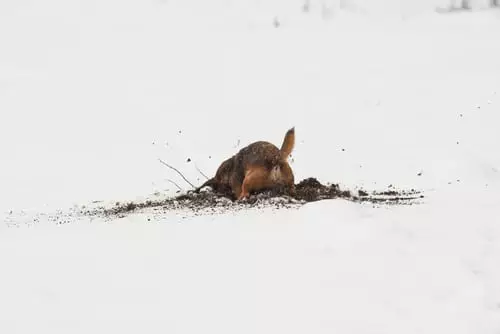The act of digging is often perceived as a mischievous habit of dogs, yet for many breeds, it is an innate behavior intertwined with their history and lineage. Certain breeds possess a stronger predisposition to digging, linked to their original purposes. While some owners may see this trait as merely disruptive — ruining gardens or causing escapes — understanding its roots can offer improved solutions to manage and redirect this behavior positively. Rather than viewing digging as a nuisance, it is essential to appreciate it as a manifestation of the dog’s instinctual heritage.
Terriers: Nature’s Born Burrowers
Terrier breeds epitomize the digging instinct, each designed for specific functions that require excellent digging abilities. Take the Cairn Terrier, for instance. This Scottish breed, with its playful yet determined nature, was historically bred to hunt small game. The digging instinct is almost a hallmark of the breed, as they were created to chase quarry into burrows. Similar is the Bedlington Terrier, a breed whose charming lamb-like appearance contrasts sharply with its robust digging prowess, honed from use in hunting vermin in mines.
The Jack Russell Terrier presents another striking example. With origins rooted in fox hunting, these dogs need to dig to access their prey in its deep burrow. Their high energy levels and intelligence exacerbate this instinct, making guidance essential to prevent destructive behavior at home.
Low to the Ground: Basset Hounds and Dachshunds
Breeds like the Basset Hound and Dachshund showcase the beauty of selective breeding for specific purposes. The Basset, with its elongated body and droopy ears, was designed to dig into burrows and flush out prey. These dogs might appear aloof, yet their inclination to dig is a remnant of their hunting heritage.
Dachshunds, on the other hand, were ingeniously engineered to access the dens of badgers. Their short stature and persistent nature make them adept diggers, leading them to potentially cause trouble in the backyard if left uninhibited. For both breeds, owners must expend time and energy on physical and mental stimulation to channel their natural behaviors constructively.
The Scent Hounds: Digging for Prey
Beagles and Bloodhounds exemplify the extraordinary olfactory gifts of scent hounds, complicating their relationship with digging. Beagles, renowned for their superior hunting capabilities, maintain a strong instinct to dig in pursuit of game, especially when they pick up on trails. Similarly, Bloodhounds – although less inclined to burrow – may dig when bored, driven by a powerful urge to explore using their acute sense of smell.
While practical training techniques exist for managing these digging tendencies, savvy owners can use their instincts to engage the dogs in scent-related activities, allowing them to fulfill their natural desires without wrecking gardens or landscapes.
Digging for Comfort: Huskies and Malamutes
Interestingly, the digging behavior takes on a different context in breeds like the Siberian Husky and Alaskan Malamute, primarily as a survival mechanism. These breeds often dig in search of cooler ground, particularly during hot weather. Their thick fur, designed for frigid climates, can lead them to seek relief by burrowing into the earth. For owners, this behavior offers insight into the needs of these high-energy, working-class dogs. Ensuring they get adequate exercise and providing shaded areas can mitigate unnecessary digging.
Terriers of All Types: The Common Thread
While various breeds display unique personalities and traits, terriers as a group possess exceptionally strong digging instincts. The West Highland White Terrier, Australian Terrier, and Miniature Schnauzer illustrate this trait well. Bred primarily for hunting small vermin, these breeds actively seek out prey by digging. Understanding their tendencies allows for better behavioral management, ensuring that their energy is effectively redirected into play and structured activities.
The Wirehaired Pointing Griffon, though less common, also offers an interesting case. As a gundog, it combines the need for exercise with instincts that lead to digging when under-stimulated.
Redirecting Digging: The Owner’s Role
Recognizing that digging is a part of a dog’s genetic make-up helps prompt owners to be proactive. Instead of scolding dogs for their instinctual behavior, it’s crucial to create an environment that circumvents issues. This could include providing designated digging areas, engaging activities, and regular exercise. Behavioral training, combined with understanding the dog’s history, cultivates a harmonious relationship that respects their intrinsic nature while minimizing disruption.
By embracing the many facets of digging in dogs, owners can foster a rewarding bond that recognizes and repurposes these instincts for play, exploration, and fulfillment. With a little creativity, every dog’s potential can be harnessed positively, transforming digging from a frustrating habit into an enriching experience for both canine and owner alike.

